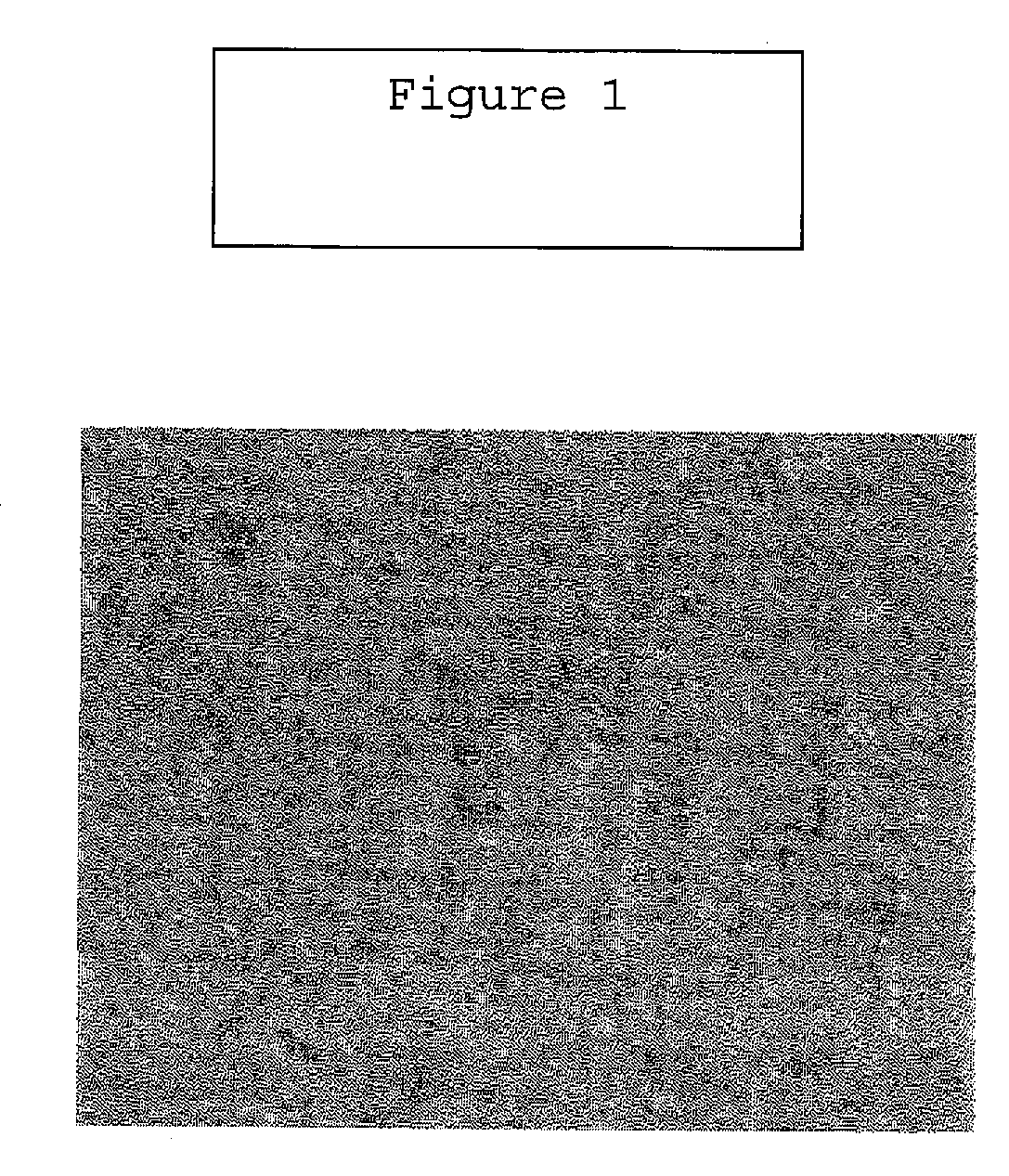Methods of Use of Biomaterial and Injectable Implant Containing Biomaterial
a biomaterial and injectable technology, applied in the field of biomaterials, can solve the problems of inability to biodegrade gels, granuloma formation and even delayed allergic reactions, and the duration of filling effects is generally less than, so as to enhance the treatment of the affected area of the body, repair and/or enhance the effect of bodily tissue insufficiency
- Summary
- Abstract
- Description
- Claims
- Application Information
AI Technical Summary
Benefits of technology
Problems solved by technology
Method used
Image
Examples
example 1
Gel Containing 4% of CHITOSAN (w / w)
[0047]Chitosan, GMP crustacean source, degree of deacetylation 85%, intrinsic viscosity of approx 150 cps (in a 1% acetic acid solution) was dissolved in purified water. Glutamic acid was added in stoicchiometric quantity (according to DDA) in the solution, which, after 15 to 20 minutes, produced chitosan glutamate. Succinic anhydride was then added (same quantity as glutamic acid) yielding a gel in the form of succino-chitosan glutamate. The pH of the gel was adjusted to 6,8-7,2 with sodium hydroxide. Gel was then filtered through a 160 μm filter to eliminate any possible undesired particle. Purified water was then added so as to obtain a 4% concentration of pure Chitosan in the gel. Gel obtained had a viscosity of approx 2500 cps, and was easy to inject through a 30 gauge needle. It was not sensitive to pH or temperature.
example 2
Gel Containing 2% of CHITOSAN, in Which 1% CHITIN Microspheres (w / w) Were in Suspension
[0048]A gel was prepared in the same way as in example 1, except for the concentration which was adjusted to 2% of pure CHITOSAN (w / w). Simultaneously, Chitosan was dissolved in a 1% acetic acid solution, and ethanol was added in a proportion of 30% of the final solution. A Büchi type spray-dryer was then used in order to obtain Chitosan microspheres, with a granulometry of 5 to 13 μm. These microspheres were poured into an acetic solution (stoicchiometric quantity of acetic acid calculated on DDA, so as to be able to reacetylate 25 to 30% of the polymer, so as to obtain more than 50% final acetylation). The resulting chitin microspheres were then incorporated into the gel so as to have 1% microspheres (w / w). The final colloidal suspension had a viscosity of approx 3500 cps, which made it easy to inject through a 27 gauge needle, and was not sensitive to pH or temperature.
example 3
Gel Containing 5% of CHITOSAN, in Which 1% CHITIN Micronized Particles (w / w) Were in Suspension
[0049]A gel was prepared in the same way as in example 1, except for the concentration which was adjusted to 5% of pure CHITOSAN (w / w). Genuine CHITIN was obtained from the GMP Chitosan supplier. The granulometry of this powder was 200-300 μm. The powder was micronized and sieved so as to obtain a powder with a granulometry of 5 to 32 μm. Chitin particles were then incorporated into the gel so as to have 1% suspension in the gel. The final suspension had a viscosity of approx 4500 cps, and it was still possible to inject it through a 27 gauge needle. The final product was not sensitive to pH or temperature.
PUM
| Property | Measurement | Unit |
|---|---|---|
| weight percent | aaaaa | aaaaa |
| weight percent | aaaaa | aaaaa |
| diameter | aaaaa | aaaaa |
Abstract
Description
Claims
Application Information
 Login to View More
Login to View More - R&D
- Intellectual Property
- Life Sciences
- Materials
- Tech Scout
- Unparalleled Data Quality
- Higher Quality Content
- 60% Fewer Hallucinations
Browse by: Latest US Patents, China's latest patents, Technical Efficacy Thesaurus, Application Domain, Technology Topic, Popular Technical Reports.
© 2025 PatSnap. All rights reserved.Legal|Privacy policy|Modern Slavery Act Transparency Statement|Sitemap|About US| Contact US: help@patsnap.com

